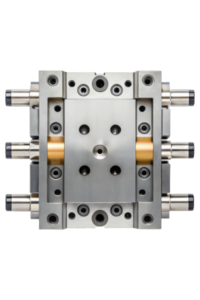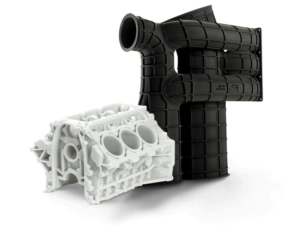Injection molding is one of the most popular and cost-effective methods for the mass production of parts. It’s used to make a wide range of items, from car parts to consumer products, but it’s also used to produce low-volume products. Low volume injection molding is a specialized process that involves creating parts with less than 100 pieces.
However, these projects are often time-sensitive and require close attention to detail, so it’s important to understand what this molding does and when you should use it. In this blog post, you’ll learn the basics of low volume injection molding and when it might be the best option for your project.
What Is Low Volume Injection Molding?
It is a process used to create plastic parts in small quantities. It is typically used for prototypes or short-run production. The process is similar to traditional injection molding, but the equipment and materials differ.
Also, Low volume injection molding uses molds that are smaller and simpler than those used for mass production. The machines are also smaller and use less force, making them less expensive and easier to set up.
Meanwhile, the main advantage of low volume injection molding is that it allows you to produce parts quickly and cheaply. It is also well suited for producing complex shapes that would be difficult or impossible to create with other methods.
Benefits Of Low Volume Injection Molding
The benefits of low volume injection molding are many and varied, but the most commonly cited ones are its affordability and speed. Low volume injection molding is an excellent option for prototyping and small-scale production runs, as it is typically much less expensive than traditional injection molding methods.
Additionally, low volume injection molding can be completed in a fraction of the time of traditional methods, making it an ideal solution for time-sensitive projects.
When Is Low Volume Injection Molding The Best Option?
As the name implies, low volume injection molding is best suited for applications requiring small parts. In many cases, it is the only viable option for prototyping or short-run production. Low volume injection molding has several advantages over other manufacturing methods, including:
– Reduce lead times: Because low volume injection molding uses existing molds, there is no need to wait for tooling to be created. This can significantly reduce lead times, especially for prototypes.
– Reduce costs: Low volume injection molding is typically more cost-effective than other methods, such as CNC machining or 3D printing, especially when large quantities are not required.
– Increase design flexibility: Low volume injection molding makes it possible to make changes to the part’s design without incurring significant tooling costs. This makes it an ideal option for prototyping or making small batches of parts with different designs.
How To Find A Low Volume Injection Molder
The procedure of plastic injection molding can be used to produce multiple units of the same object. Small parts or products with intricate detailing are frequently done via injection molding. When injection molding is used to create objects in low volumes, it is typically referred to as low volume injection molding.
You require low volume injection molding services for a number of reasons. You may have designed a new product and need to create prototypes before going into total production. Or you could run a business that requires periodic production runs of a few hundred parts at a time.
Also, setting up and tearing down an injection mold each time would be too costly and impractical. Whatever your reasons for needing low volume injection molding, there are a few things to keep in mind when looking for a supplier.
Firstly, consider what materials you will need your parts molded from. Injection molding can be done with many different plastics, but not all suppliers will offer all materials. Make sure to find a supplier who can provide the material you need.
Secondly, take time to understand the different processes involved in injection molding and how they might affect the final cost of your parts. For example, some suppliers may charge more for molds that require multiple cavities or complex geometries.
Finally, get quotes from multiple suppliers before making your decision. Injection molding services can vary widely in price depending on the size and complexity of your project.
Conclusion
In conclusion, low volume injection molding is a great option for businesses looking to produce plastic parts and products in smaller quantities. Using this technique, you can save time and money on production costs while still maintaining quality. This technology has revolutionized the manufacturing industry by providing rapid prototypes that have enabled companies to launch new products much faster.
Also, there is a company called Quickparts that is your go-to partner for 3D printing and traditional manufacturing services. They excel in producing parts across a wide range of processes, so you can count on them whether you need prototypes or volume production. With their in-house production capabilities and manufacturing partners worldwide, they can manufacture your parts quickly and efficiently, wherever and whenever you need them!
FAQs
Q1. Which mold is used for low-quantity work?
- Several different types of molds can be used for low volume injection molding, each with its advantages and disadvantages. The single cavity mold is the most common type, typically used for small, simple parts. However, it could be better suited for complex parts or high production volumes.
- Another type of mold that can be used for low-volume production is the multi-cavity mold.
- The final type of mold used for low volume injection molding is the family tooling mold. This type of mold is typically used for high volumes of production.
Q2: In the procedure of injection molding, what are the implications of low injection pressure?
Injection pressure is one of the essential variables in injection molding, and it directly affects the quality and the cost of the final product. Low injection pressure can cause several problems, including:
- Poor dimensional accuracy
- Poor surface finish
- Incomplete filling of the mold
- Porosity
- Warpage
- Voids or air pockets
- Short shots
- Flash
Q3. How do you increase injection pressure?
There are several ways to increase injection pressure. One is to use a higher-pressure pump. Another is to increase the force with which the screw is driven. The third way is to increase the back pressure on the screw.
Q4. What is the holding time in injection molding?
One of the critical factors in injection molding is the holding time. This is when the molten material is held in the mold before being injected. The holding time is essential because it allows the material to cool and solidify, which helps to create a stronger and more durable product.
Q5. How many zones are in the injection molding machine?
- As you may know, injection molding machines have different zones, each designed for a specific purpose. The most common zones are the injection, hold, and cooling zones.
- The injection zone is where the plastic is first injected into the mold. The holding zone is where the plastic is held under pressure until it solidifies. The cooling zone is where the plastic cools and solidifies.
- Depending on the specific machine, there are many zones in an injection molding machine. Some machines have only two zones (injection and cooling), while others have three or more.


